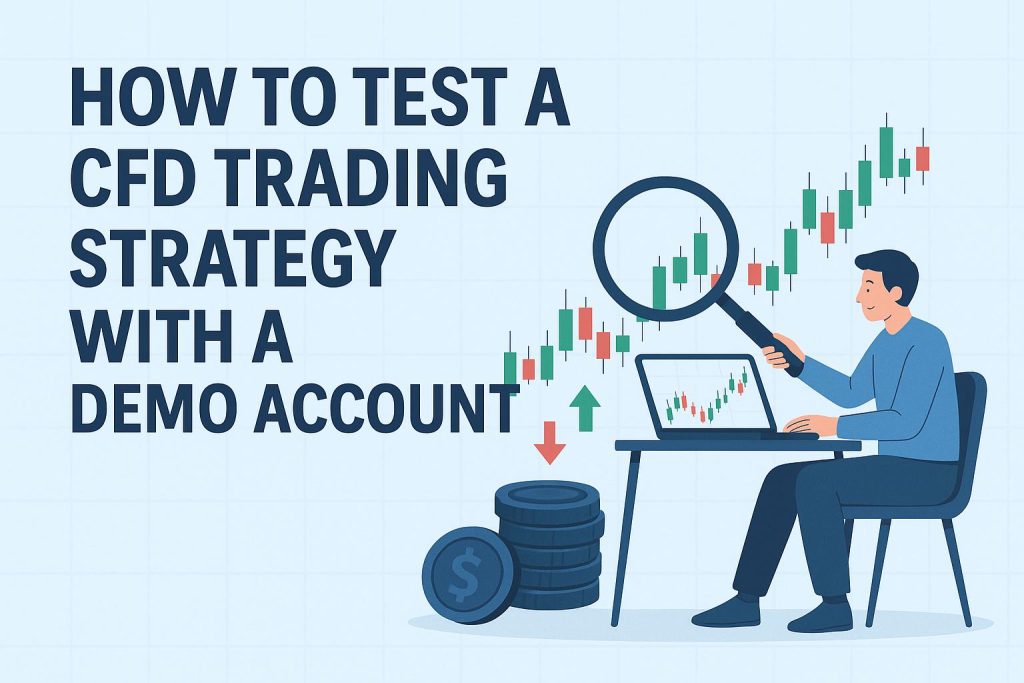Introduction to CFD Trading Strategies
Contracts for Difference, commonly known as CFDs, are financial derivatives that enable traders to speculate on price movements without owning the underlying asset. This characteristic makes CFDs a popular choice among traders looking to leverage price volatility in global markets. Whether you are a novice or an experienced trader, utilizing a demo account to test your strategies can be a valuable step in honing your trading skills. A demo account provides a simulated trading environment that mirrors real market conditions, allowing traders to practice and optimize their strategies without any real financial risk.
In the competitive realm of financial trading, the ability to strategize effectively can define a successful trader. As with any financial instrument, the process begins with understanding how to safely and efficiently test your methods before putting real money on the line. In this environment, a demo account becomes an indispensable tool. It offers the real-time market scenarios necessary to experiment with different strategies, learn from mistakes, and refine your approach. This structured practice is essential for reducing psychological pressures and increasing confidence when transitioning to live trading.
Setting Up a CFD Demo Account
Starting your journey into CFD trading logically begins with setting up a demo account. This simulated trading environment is crucial for familiarizing yourself with the intricacies of the market and your chosen trading platform. Brokerage platforms typically provide demo accounts loaded with virtual funds, creating an excellent opportunity to practice trading techniques and strategies how you would with actual capital.
To initiate this process, the first step is registering with a brokerage firm. Registration processes are fairly straightforward, usually requiring basic personal information, such as your name, email address, and contact details. After registration, you’ll gain access to the broker’s trading platform, where you can start exploring and practicing different trading strategies.
Selecting a Reliable Broker
Choosing the right broker is paramount. A reliable broker offers a robust, well-designed platform with valuable features that support strategy testing. When evaluating potential brokers, consider the following aspects:
As you look for a brokerage firm, it is imperative to find one that provides a fully functional demo platform that accurately reflects live trading conditions. This facilitates a seamless transition from practice to real-life trading experiences. Assess the range of markets available to trade; a good brokerage offers exposures across diverse asset classes such as equities, forex, commodities, and indices. Such diversity allows you to test your strategies under different conditions and scalings, ensuring they are adaptable and robust.
The platform’s user interface should be intuitive and user-friendly, promoting efficient and effective practice. Look for brokers that incorporate analytical tools and indicators within their demo accounts, as these can provide deeper insights into market movements and the effectiveness of your strategies.
Developing Your CFD Trading Strategy
A trading strategy is your game plan for navigating the markets. It defines how you will approach trades, manage risks, and make decisions under various market conditions. Crafting a well-considered strategy involves several critical steps that align with your trading objectives and style.
Define Your Goals
Every strategy begins with clear, defined goals. These objectives act as a compass, guiding your decisions and determining your trading approach. Whether you are focused on short-term profits or long-term wealth accumulation, your goals shape the design and implementation of your strategy.
Choose Your Trading Style
Your trading style is the lens through which you implement your strategy. Different styles offer distinct advantages and disadvantages and should match your financial capacity, risk tolerance, and time commitment. Day trading involves executing numerous trades within a single day, demanding significant time investment and rapid decision-making. Conversely, swing trading involves holding positions over several days or weeks, while position trading may span months or even years. Each style requires a tailored approach to effectively manage risk and capitalize on market movements.
Implement Risk Management
Risk management is the backbone of any successful trading plan. It involves developing methods to protect your capital from unforeseen market shocks. Essential components include setting stop-loss orders to limit potential losses and choosing appropriate leverage levels that align with your risk appetite. Consistency in applying risk management techniques is crucial to maintaining portfolio stability amidst market volatility.
Testing the Strategy in a Demo Account
With a developed strategy in hand, the next step is to test it in a simulated trading environment. Utilizing your demo account to execute and assess your strategy under real market conditions is a vital step in fine-tuning your approach.
Track Performance
Monitoring the performance of your strategy across different market scenarios enables you to understand its strengths and limitations. An effective testing phase should involve detailed performance analysis, identifying successful elements and those that may require adjustments. Regular performance evaluations are crucial for strategy refinement.
Record Your Trades
Maintaining a detailed trading journal is an invaluable practice. Documenting each trade’s rationale, entry and exit points, and outcomes allows you to identify patterns, evaluate decision-making processes, and learn from mistakes. This comprehensive recordkeeping facilitates in-depth analysis and constant refinement of your strategy.
Refining the Strategy
The insights gained from testing in a demo account inform the ongoing refinement of your trading strategy. Flexibility and openness to adapt are crucial, as markets evolve and present new challenges and opportunities.
Continuous Learning
Success in CFD trading demands a commitment to continuous learning and skill enhancement. Staying informed about market trends, attending educational webinars, reading relevant literature, or enrolling in online courses can significantly enhance your knowledge and trading prowess. The more informed and educated you are, the better equipped you will be to make sound trading decisions.
Conclusion
Testing and optimizing your CFD trading strategies using a demo account offers a practical, risk-free way to enhance your trading skills. This strategic approach provides a valuable opportunity to understand market dynamics and fine-tune your techniques before committing real capital. Ultimately, the experiences and knowledge gained from this practice phase are instrumental in developing successful live trading methodologies.
This article was last updated on: September 4, 2025







